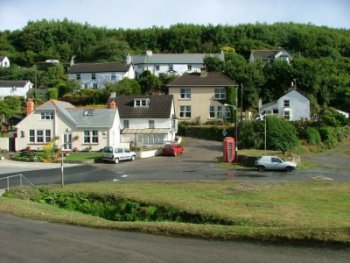
A once busy fishing village
Web: www.visitcornwall.com/things-to-do/beaches/porthoustock-beach
A small hamlet near St. Keverne on the east coast of Lizard Peninsula. Aggregates are quarried nearby and Porthoustock beach is dominated by a large concrete stone mill. The mill was once used to crush stone but is now disused. Container ships of up to 90 yards can dock alongside the wharf along the southern edge of the beach to be loaded with stone. Several fishing boats operate from the shingle beach, with lobster and crab potting, net fishing and long lining as the principal fishing methods. The South West Coast Path passes through Porthoustock.
Porthoustock originated as a fishing hamlet. However, from the 1890's the village developed as a port for the local stone quarries. There has been quarrying activity in Porthoustock since the late 19th century. By the 1940's the quarries were owned by Amalgamated Roadstone and provided stone to build Cornwall's wartime airfields. Porthoustock survived a German bombing raid in November 1940 with no casualties.
The village also has the Old Lifeboat House and around the turn of the century, the local men were true heroes in their attempts to save many a life from the shipwrecks on the Manacles reef nearby. The liner 'The Paris', was stranded on The Manacles in 1899.
Titanic survivor Mrs Annie Margaret Hold (1883-1960) was born in the village.
Coverack Helford Lizard Peninsula Roskilly's Farm Porthallow St. Keverne The Coastal Footpath